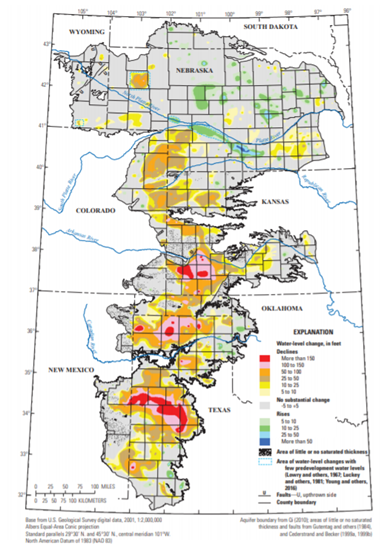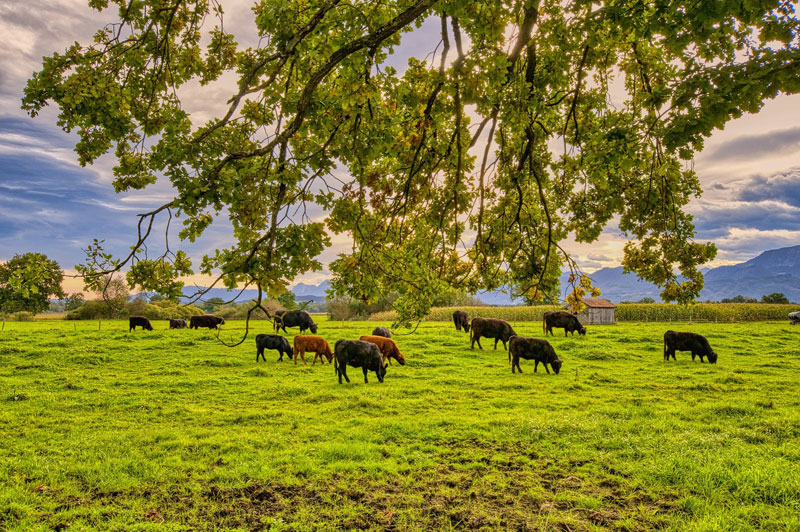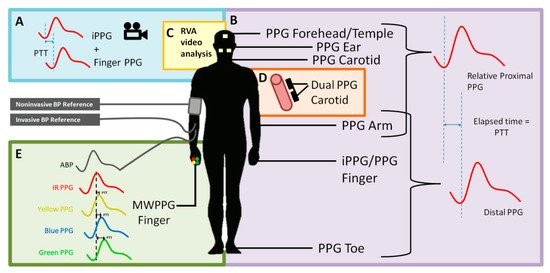One Health Newsletter
A Review of the Kansas City One Health Day 2020
Authors
Cheyenne Brunkow, Sara J. Ochoa, Del’Sha Roberts, and Yu Shin Wang
One Health Day is a global campaign that celebrates and brings attention to the need for a One Health approach to design and implement programs, legislation, and research in which communication and interdisciplinary work are required to achieve better public health outcomes.1 One Health describes the complex interrelationships between human, animal, and environmental health.
This year, experts and community members united to commemorate Kansas City One Health Day on November 19, 2020. Hosted by various stakeholders, including BioNexus, Kansas State University, the University of Kansas, and others, the robust agenda facilitated keynote presentations and open dialogue on biosensor development and application in environmental sustainability and animal health promotion, and human health. In addition, high school, undergraduate, and graduate students presented their research findings (Table 1) to a panel of judges, and a winner was chosen from each division.
|
Presentation Title |
Presenter — Student |
|
Improving Nutritional Quality of Strawberries Growing Under High Tunnels in Kansas |
Amrita Mukherjee |
|
Genotypic Characterization of Antimicrobial Resistance in Salmonella |
Carla Schwan |
|
Antimicrobial Activities of Phytophenols against Bacterial Pathogens that cause Liver Abscesses in Feedlot Cattle |
Ciera Roubicek |
|
Salmonella in Piglets: Impact of in-feed or in-water Antibiotic Administration on the Fecal Prevalence and Antimicrobial Susceptibility |
Victor Ishengoma |
|
Whole-Genome Sequencing and Phenotypic Investigation of Antimicrobial and Heavy Metal Susceptibilities of Salmonella spp. and Escherichia coli Isolates from U.S. Swine Feed Mills |
Gabriela Magossi |
|
The Role of Rhamnolipids on Pseudomonas aeruginosa Biofilm Development |
Alaa Youssef |
|
A Look Inside Listeria Monocytogenes Biofilms |
Kaitlyn Rhine |
|
Assessing Biofilm Formation on Poly (methyl methacrylate) PMMA Bone Cement |
Elizabeth Falkner** (University of Minnesota) |
|
The Impact of IL-13 on Mucus Production of Adenocarcinoma Cells |
Alaina Coughlin |
|
Use of Environmental Monitoring to Inform Biosecurity Compliance in a Swine Health Challenge |
Olivia Harrison*** |
|
A Pilot Study of Pain Assessment and Activity Tracking in Dogs Undergoing Radiation Therapy |
Marissa Komp |
|
Targeting Gene Expression in Breast Cancer Cells |
Morghan Golloher |
|
The Use of Bacteria to Combat Pollution |
Aarushi Pore |
|
Promoter Identification and Activation of Dp260 Dystrophin Isoform |
Keanon Swan |
|
Design of a Novel Inhibitor for the Cdc 14 Enzyme in Fusarium oxysporum |
Arjun Garapaty* (Olathe North High School) |
|
Health Disparities and Alzheimer’s Disease: History and Solutions |
Laylan Hamid |
Table 1: One Health Student Presentations
*High school (HS) student winner **Undergraduate (UG) student winner ***Graduate (G) student winner
Keynote Presentations
The conference featured keynote speakers, including Mr. John Lagemann from John Deere, Dr. Susan Wernimont from Hill’s Pet Nutrition, and Mr. Scott Burgett from Garmin. Each speaker shared their experiences in the applications of biosensors in environmental sustainability, animal health promotion, and human health.
Biosensors' applications in agriculture. John Lagemann joined John Deere in 1982. Before retirement earlier this year, Lagemann served as a senior vice president and oversaw the sales and marketing activities in the United States, Canada, Australia, New Zealand, and several countries in Latin America. With a passion for environmental sustainability, Mr. Lagemann shared his experiences regarding biosensors' applications in agriculture.
In a growing world with a current global population of 7.7 billion and an annual rate of population growth of 1.1%,2 people rely on land and water resources for food and quality of life. Although the concept of precision agriculture has yet to gain widespread usage, global natural resources are finite. (Precision agriculture is the management strategy to gather, process, and analyze the temporal, spatial, and individual data support management decisions.) Limited lands are available to be expanded for crop production; oil wells have been drilled over 25% deeper over the past 50 years,3 and the water-level in Ogallala Aquifer has declined over 30% (Figure 1).

Figure 1: Water-level changes in the High Plains aquifer, predevelopment (about 1950) to 2015. (Source: USGS (United States Geological Survey) 2017. https://pubs.usgs.gov/sir/2017/5040/sir20175040.pdf)
With biosensors installed on farming equipment, the whole production system is mechanically advanced from auto-adjustment of varying distance in seeding, varying spray rate in chemical application, collecting and compiling data for next cycle’s prescription during harvest, to adjusting soil depth tilled in field preparation. The advancement in mechanization has brought us from 12 horsepower in 1918 to exceed 600 horsepower in a modern combine in 2020. Furthermore, GPS, artificial intelligence, and machine learning have also been incorporated into biosensors. This advancement can maximize the equipment’s capability by map-based technology and high-speed cameras in addition to data collection. One example is that with the ability to distinguish a weed from a plant, fewer chemicals are needed, and, therefore, the output-to-input ratio is augmented. With that, this can meet the challenge of limiting the input and producing more output—while preserving the environment. Sustainability can be promoted through the use of precision agriculture and the incorporation of biosensors. With these advancements, farmers can meet increased demand from the demographically growing society and population.
Biosensors' applications in animal health. Dr. Susan Wernimont is currently an Associate Director in the Global Clinical Nutrition, Claims, and Clinical Studies group at Hill’s Pet Nutrition, Inc. She also held the position of Clinical Research Platform Lead and Nutritional Scientist at Pfizer Nutrition and Principal Scientist in Clinical Research at Nestle Nutrition. Dr. Wernimont discussed wearable devices' applications in human medicine and how “wearables” are emerging in animal health monitoring, diagnosis, management, and treatment.
Wearable devices are small devices designated to be worn in clothing or directly against the body that use computers or other advanced technology to monitor physical activity, entertainment, and other tasks. To date, wearables are fairly common components of our daily lives, such as smartwatches, UV monitors, smart hearing aids that can either dampen or amplify the surrounding sounds according to inputs, and glasses with a video camera that can record experiences in 3D with audio, stream to social media, and even relay virtual reality onto the real world. These applications can be used in manufacturing environments to increase efficacy and efficiency. In addition to the current world with biosensors, Dr. Wernimont also painted a picture of what future life may look like with an even greater incorporation of technology. For instance, contact lenses can analyze tears; fabrics with embedded GPS that can analyze moods, provide directional information, connect with an insurer in case of emergencies; and blue tooth nail polish with microchips can enable 3D drawing and provide haptic feedback in holographic interaction. A critical outlook for future biosensor applications is that an individual’s physical movement can convert energy via smart sneakers from mechanical to electrical energy to power all the wearable devices. The advancement of wearable biosensors largely depends upon the data collection process.
In contrast to the conventional parameter recording that is limited to periodic physical examination and medical assessment in the clinics, the implementation of wearables has enabled individuals to collect more transformational data that is continuous, objective, quantitative, and near real-time. In the clinical context, patients’ medical conditions can be monitored remotely to track heart rate, respiratory rate, blood pressure, and other basic physiologic parameters. In addition to human medicine, wearable devices have also been used in veterinary medicine. These applications include monitoring animals’ location in the cattle herd (Figure 2), detecting the degree of lameness, and recording large animals' daily and reproductive activities. Different biosensors have been designed to detect seizures, obesity, and jumping behaviors of small animals, which aids in diagnostics and clinical research. An increase in the biosensors’ data collection frequency allows us to distinguish and analyze behavior like scratching and running more accurately. Also, implementing machine learning helps with triage that distinguishes between normal, abnormal but urgent, and abnormal and urgent conditions, which require immediate medical attention. These advancements have changed our patient care as well as the approach of clinical researches.

Figure 2: Locations of cattle herd can be monitored with biosensor implementation.(Source: https://pixabay.com/photos/nature-pasture-livestock-cattle-5625841/)
Gradually, clinical research has been taking on digital components with which participants can be recruited digitally with more accessible information through social media and communication channels with potential participants. Overall, wearable devices have gained popularity, showing increased applications in humans and animals' daily lives. They also offer advantages over traditional data collection methods when integrated into human and animal health in clinical research and patient care.
Biosensors' applications in human health. Mr. Burgett has held the position of Director of Garmin Health Engineering since 2015 and is responsible for managing biosensor innovation and development globally, including the interaction with regulatory bodies such as FDA and FCC in the United States at Garmin. During his tenure, Garmin has developed industry-leading wearable biosensors such as optical heart rate and pulse oximetry sensors in addition to derived biometric measurements such as stress level, sleep stage analysis, and body battery. Mr. Burgett highlighted biosensors’ importance and demonstrated how much data are available and collected from only wearing a watch. Although having a broad product line, the biosensors incorporated in Garmin watches compose a common platform that provides valuable physiological data. These data include steps and activity level driven by an accelerometer, oxygen saturation measured by pulse oximetry sensors, the wearer’s heart rate (including resting heart rate and beat-to-beat intervals (BBI)), and respiratory rate detected by an optical sensor. Integration of the collected data can further be translated to an estimation of different sleep stages and duration. These biomarkers acquired digitally have shown importance in their increasing popularity among corporations. Primarily in the life and health insurance industries, domestic and global partnerships have been increasingly established to adopt wearable devices due to the capability to provide information regarding life expectancy and healthy lifestyles. Specific biomarkers studied extensively include heart rate, resting heart rate, stress level, oxygen saturation, and respiration parameters.
Interestingly, resting heart rate was found to provide health status and may be used as an indicator before a person begins feeling sick. One pioneer technological development in Garmin is the utilization of photoplethysmography (PPG) (Figure 3). PPG uses light reflection to capture minute changes in pulsatile arterial blood just below the skin. The change in blood volume accurately reflects the wearer’s cardiac cycle. Therefore, PPG allows us to measure pulse rate and BBI, and it has been validated due to its close relation to a clinically measured electrocardiogram (ECG). BBI can, after that, be translated into heart rate variability, and through an algorithm, analysis of stress, body battery, sleep stages, and even the episodes of heart arrhythmia can be estimated.
Figure 3: A visualization of the methods multi-site photoplethysmography (PPG) to measure the pulse transit time (PTT).
(Source: Chan G, Cooper R, Hosanee M, et al. Multi-site photoplethysmography technology for blood pressure assessment: Challenges and recommendations. J Clin Med. 2019;8:1827.)
Nonetheless, some factors exist which contribute to the inaccuracy of the data. For example, motion artifacts and low blood perfusion in cold weather can affect data collection and interpretation. Overall, biosensors’ measurements are still reliable and have been incorporated in research regarding mental illnesses, changes in emotional states, chronic pulmonary obstructive disease (COPD), and COVID-19-related clinical studies. Despite that the parameters collected with a wearable possess considerable potential, more biomarkers are being discovered, broadening the outlook for developing and applying new biosensors. Lastly, some important considerations with biosensors' use are data privacy, since the information gathered from an individual is personal. Therefore, there should be explicit consent to share biosensor data. Besides, there can be a challenge in the transmission and translation of data from a biosensor, in which the data would need to be translated into something meaningful.
Overall, the incorporation of biosensors has grown in our daily lives and medical diagnosis and research. From the viewpoint of environmental sustainability, animal health, and people’s well-being, biosensors' development and application possess a promising future.
Kansas City One Health Day 2020 successfully brought together researchers, industry professionals, and community members. According to the global One Health campaign, this platform enabled participants to share and discuss ideas for the new technologies and explore the potential implementation of these ideas. Inputs from different study fields were greatly encouraged and appreciated as the One Health approach strives to achieve better public health outcomes through interdisciplinary communication and collaboration. As a global society, we must protect environmental, animal, and community health.
References
- World Health Organization (WHO). (2017, September 21). One Health. Retrieved December 21, 2020, from https://www.who.int/news-room/q-a-detail/one-health
- United Nations, Department of Economic and Social Affairs, Population Division. (2019). World population prospects 2019, Volume II: Demographic Profiles. Retrieved December 21, 2020, from https://population.un.org/wpp/Graphs/1_Demographic%20Profiles/World.pdf
- U.S. Energy Information Administration. (2020, November 30). U.S. average depth of crude oil developmental wells drilled. Retrieved December 21, 2020, from
Next story: Sickle Cell Disease: A One Health Solution to a Neglected Genetic Disease
One Health Newsletter
The One Health Newsletter is a collaborative effort by a diverse group of scientists and health professionals committed to promoting One Health. This newsletter was created to lend support to the One Health Initiative and is dedicated to enhancing the integration of animal, human, and environmental health for the benefit of all by demonstrating One Health in practice.
To submit comments or future article suggestions, please contact any of the editorial board members.
